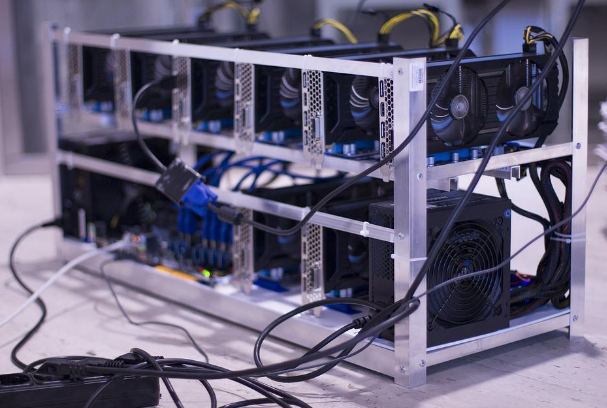what is bitcoin mining
The cryptocurrency mining process is used to validate Bitcoin transactions and add them to the Bitcoin ledger. It requires specialized hardware, such as ASICs or graphics cards, to compete with other coins in the mining process. To mine Bitcoin, you need specialized software, and the best bitcoin mining technology will let you access it without special equipment. Here's what you need to know about how to become a miner.
What Does Bitcoin Mining Do?
Bitcoin mining operates on a distributed system, meaning participants share resources with each other at a centralized location. This infrastructure requires complex cryptography, meaning Bitcoin addresses can be shared among machines in different locations around the world. All transactions involve two people (typically a person with a Bitcoin wallet) who exchange digital currencies for one another. They transfer money from one account to another, often by sending currency to someone else. When two people want to send their money, they use public keys—cryptographic codes stored on a user’s device that identify them individually and allow other users to see it. These keys are then encrypted (hence the name "cryptocurrency") by others on the same network before being broadcasted out to everyone on the Internet. A transaction is only recorded in the Bitcoin ledger if it records all fees paid, the amount of payment, and the time when the transaction was made. Most transactions are also recorded and sent over a public key encryption scheme which allows Bitcoin addresses to be identified, but not personally identifiable information, like address, date, time, and so on.
Bitcoin mining involves computing power and capital, creating new Bitcoins and adding them to the blockchain with verified transactions. If no transactions are verified during this phase, Bitcoin mining gets stuck waiting for more coins to be produced. The process creates new bitcoins and gives miners a reward by staking coins so that others do not take advantage of someone else’s coins. After Bitcoin mining is completed, it takes roughly 30 days for coins to appear in the Ethereum blockchain, where Bitcoin mining operates. In 2017, 2.3 billion Bitcoins were created as part of the initial launch of Bitcoin to the private market, making up about 10% of all the Bitcoins ever created.
A Bitcoin Wallet is required to transfer funds between individuals. Once the Bitcoin has been mined, it is locked up by itself in order for anyone to see it. You can also store your Bitcoin in a paper bank account, a USB stick, an anonymous web browser, or even offline somewhere (like under a mattress). However, once you have Bitcoin, nobody can just grab it and run away with it, as Bitcoin transfers require high-level security and verification of identity of the owner.
How Much Does Bitcoin Mining Cost?
Bitcoin mining can cost hundreds of thousands of dollars depending on how much you can afford. Bitcoin mining works by converting blocks into larger units called blocks. Every block contains data (or code) about a transaction that happened in the past which determines whether its record in the Blockchain will be added to the current list of all Bitcoin transactions. There are three phases to mining:
First Stake : Each bitcoin mining pool generates a random number and a private key. Users add these numbers to their Bitcoin wallets in hopes of receiving coins.
: Each bitcoin mining pool generates a random number and a private key. Users add these numbers to their Bitcoin wallets in hopes of receiving coins. Second Stake : People buy those coins now. Usually for 1 BTC, you pay 250 BTC. Since there are many pools to choose from, users pay a lot more than they would expect to gain coins.
: People buy those coins now. Usually for 1 BTC, you pay 250 BTC. Since there are many pools to choose from, users pay a lot more than they would expect to gain coins. Third Stake: After the first and second stages, there’s the actual mining of the Bitcoin transaction. That means finding the right combinations of Bitcoin and private keys that correspond to the Bitcoin address, time, and network of Bitcoin users. Also, users can find out if payments were properly made and when they were spent.
Once a Bitcoin transaction is fully verified, new coins are minted and added to the Bitcoin blockchain. As a result, Bitcoin mining is always going. For instance, the next batch of 1000 Bitcoins will only be available to Bitcoin miners until they are used. New Bitcoins arrive through the following channels:
Bitcoin Rewards Program : Users can earn new Bitcoins through regular Bitcoin mining through websites such as Bittrex, Coinbase, CEXPOX, and many more.
: Users can earn new Bitcoins through regular Bitcoin mining through websites such as Bittrex, Coinbase, CEXPOX, and many more. Existing Bitcoin owners: Anyone may send Bitcoin to others, but none can receive any Bitcoins. Only Bitcoin owners are eligible, even though anyone can be a BTC miner. Bitcoin transactions worth less than $20,000 are not allowed, even if the amount being transferred is very small.
Where Can I Get Bitcoin Mining Equipment for Free?
There are several alternatives to traditional mining equipment. While some of the solutions have become incredibly expensive, others are still very affordable. Before purchasing any mining equipment, be sure to search for Bitcoin mining companies that offer free Bitcoin mining to their customers. Some examples include Ledger Nano S, Antminer T17, Kraken X70 Pro GPU M1, Folding Strike Lite V1, Digiview x360M3, R9 Plus, GigaPeng 4G/S and Antos 2.


Comments
Post a Comment